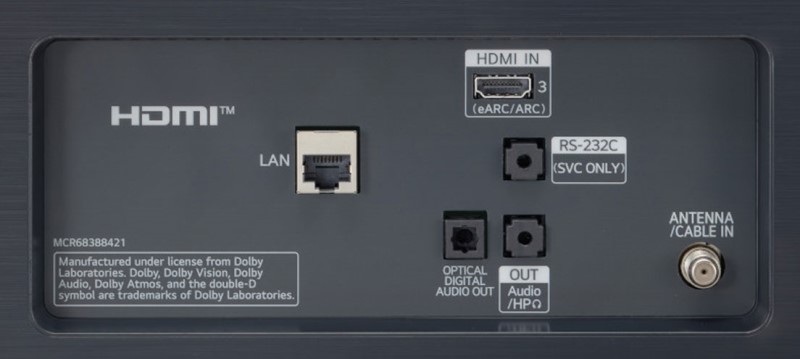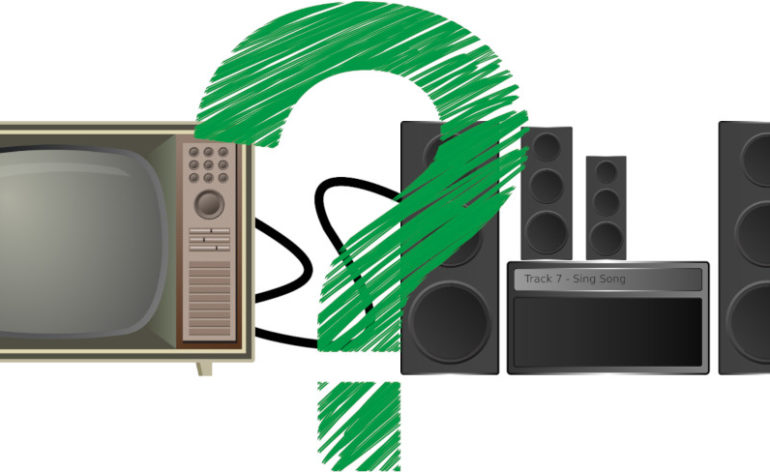How to Play TV Sound Through Home Theater System Speakers
If there is a question that is more ubiquitous in home theater than transferring sound from one place to another, I don’t know what it is. When display manufacturers started including streaming apps, we knew this question was going to get more pressing. Everyone was going to want to know how to get the streaming app sound from their TV to play through their home theater systems speakers. Those speakers might be a soundbar, or a full Atmos setup. It doesn’t matter what your audio situation is, the answers are the same.
Before You Start
When you are trying to play the TV sound through your home theater system speakers, you are going to have to access the menus in all of the devices. At the very least, you’ll need to disable the speakers on the TV. No, you don’t want the TV speakers to play at the same time as your home theater system speakers. This will likely have a delay and, even if it doesn’t, they won’t sound as good. We’d say to just turn them down, but many displays won’t enable their other audio outputs if the TV speakers are still enabled. Going into the menu and disabling the speakers is a must.
Determine Your Best Audio Solution
Before you start buying cables, you’ll want to determine what is your best option for audio. Peak around the back of your TV and your home theater system input. This might be your receiver or it might be a soundbar. Regardless, what audio outputs do you see there? Generally, on the TV you’ll find HDMI inputs, some sort of digital output (usually optical), and maybe red and white RCA audio outputs (or a 3.5mm jack which is functionally the same thing).
If you have a receiver, you’ll have a ton of inputs. What you are looking for there is whether or not your receiver has HDMI ARC or HDMI eARC (get to these in a minute). If not, try to find a compatible digital input. This is the same for your soundbar or whatever other device you have. In order of fidelity, you’ll want to use:
- HDMI eARC
- HDMI ARC
- Digital (Optical or Coax)
- L/R RCA
Let’s look at each separately.

eARC
eARC or Enhanced Audio Return Channel is part of the HDMI spec. It allows audio to flow backward from one device to another. This was specifically designed to play your TV sound on your home theater system speakers without needing a separate connection. Since this is a newer feature, you may be worried about having to upgrade your cables.
That shouldn’t be the case. If you have any standard HDMI cable with Ethernet, or a high-speed HDMI cable with Ethernet, you should be good. Anything with the Ultra High-Speed certification will definitely work. It is possible that a very early HDMI with Ethernet cable will not work, but unlikely.
What Audio can You Get?
With eARC you can get all the audio formats that currently exist. This includes all the surround sound codecs including Dolby Atmos, Dolby TrueHD, DTS:X, and DTS Master Audio. If you have access to eARC, there is no audio codec that your TV can send that will not pass through the eARC connection. This is the best solution
Enabling eARC
eARC (and ARC) require a bit of fiddling to get them to work. The problem is that every device and manufacturer has the option to change how to enable eARC. Some have an eARC setting, others require you to enable HDMI CEC. While we normally suggest you turn HDMI CEC off, CEC may be necessary to get eARC to work. Be prepared to spend some time with your manuals and phone to figure out how to get eARC working.
In general, you’ll need to enable HDMI CEC (or some portion of it) on both the display and your home theater speaker solution (receiver or soundbar). Most soundbars will have it on by default, receivers may require that you turn it on. Many displays have multiple HDMI inputs but only one of them will be labeled eARC. Look for that one. Receivers are the same with usually two HDMI outputs, only one of which will be labeled HDMI eARC.
Once you have HDMI CEC enabled and the correct cable connected to the correct HDMI ports, you should be good to go. Should. Good luck. HDMI can be a headache.
ARC
If you have an HDMI labeled ARC and another labeled eARC, you will be limited to ARC. Audio Return Channel, or ARC, works exactly the same as eARC except that it isn’t as powerful. The upside is that nearly ANY HDMI cable can be used for ARC. The downside is that you will be limited in what audio codecs can be sent. You will lose access to lossless audio (Dolby TrueHD, DTS Master Audio) as well as object-based formats (DTS:X and Dolby Atmos). Instead, you will be limited to compressed Dolby Digital and DTS. These were the audio formats on DVDs (Blu-ray introduced lossless audio). They still sound good, just not as good.
Follow the instructions under the eARC section for enabling ARC. It is the same.
Digital Audio (Optical or Coax)
Most TVs have an optical audio output so that you can play the sound on your home theater system speakers. Usually, you need to disable the speakers on the display to get the audio out of the optical connection. With a digital audio connection, you don’t need to enable HDMI CEC, but you will need to tell your receiver which optical input to play when using your TV’s apps.
Like ARC, you’ll be limited to lossy audio codecs. On top of this, the optical connection has more limited bandwidth than ARC (364 kbps vs 1Mbps). Will you hear much difference between the digital audio connection and ARC? Depends on the app you are using. Some apps limit audio codecs and compress the audio (we are looking at your YouTube) so much that it shouldn’t make an obvious difference.
L/R RCA
The lowest fidelity audio connection to get the sound from your tv to your home theater system speakers is the RCA connection. It isn’t so much that it is low fidelity, it is more that it is limited to stereo audio. Plus, it requires the TV to decode the audio. While we generally believe that DACs are a mature technology, if they are going to get messed up somewhere, it is in a display. If you really want to get the best possible sound quality to play over your home theater system speakers from your TV, RCA is not the way to go. But it will make noise. And if you are just trying to get something, and this is your only option, it is better than using the TV speakers. Usually.
Conclusion
If you’ve upgraded your home theater system, including speakers and TV, in the last couple of years, you should be able to use eARC to play the sounds from the TV. eARC is clearly the best solution for getting the audio from your TV to your receiver or soundbar. If you don’t have access to eARC, we’ve given you pretty much all the other options.
Do you use eARC or ARC in your system? Have you run into any issues? What did you do to fix them? Let us know in the comments below or on our Facebook page.


